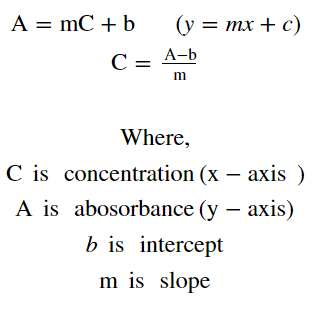The red color of soil is often due to the presence of iron. Metal ions are extracted from soil by stirring the soil in acid and then filtering the solution. One method for the analysis of Fe2+ is to form the highly colored Fe2+–thioglycolic acid complex. The complex absorbs strongly at 535 nm. Calibration standards of 1.00, 2.00, 3.00, 4.00, and 5.00 ppm are prepared by transferring appropriate amounts of a 10.0 ppm working solution of Fe2+ into separate 50-mL volumetric flasks, each of which contains 5 mL of thioglycolic acid, 2 mL of 20% w/v ammonium citrate, and 5 mL of 0.22 M NH3. After diluting to volume and mixing, the absorbances of the standards are measured.
The red color of soil is often due to the presence of iron. Metal ions are extracted from soil by stirring the soil in acid and then filtering the solution. One method for the analysis of Fe2+ is to form the highly colored Fe2+–thioglycolic acid complex. The complex absorbs strongly at 535 nm.
Calibration standards of 1.00, 2.00, 3.00, 4.00, and 5.00 ppm are prepared by transferring appropriate amounts of a 10.0 ppm working solution of Fe2+ into separate 50-mL volumetric flasks, each of which contains 5 mL of thioglycolic acid, 2 mL of 20% w/v ammonium citrate, and 5 mL of 0.22 M NH3. After diluting to volume and mixing, the absorbances of the standards are measured.
a)What is the effect on the reported concentration of iron in the sample if there is a trace impurity of Fe2+in the ammonium citrate?

The beer lambert's law is compared with line equation as follows:

Trending now
This is a popular solution!
Step by step
Solved in 2 steps with 2 images









